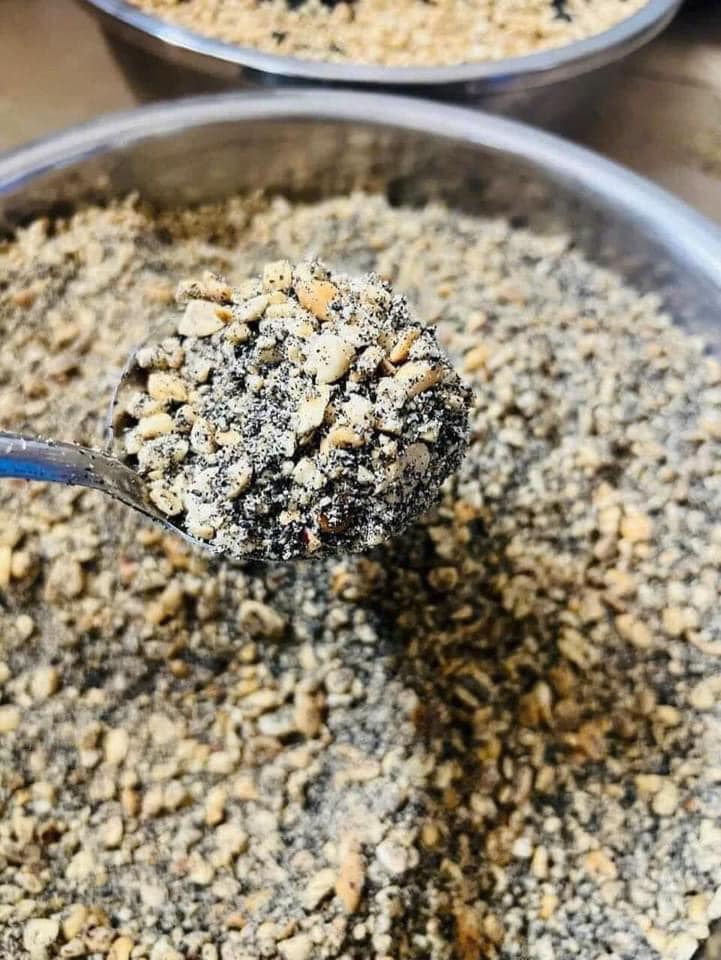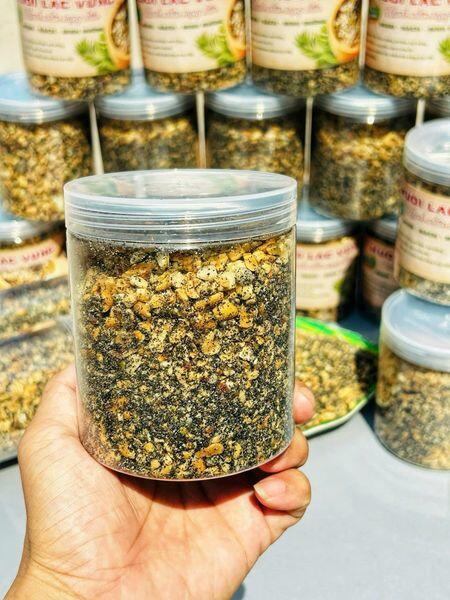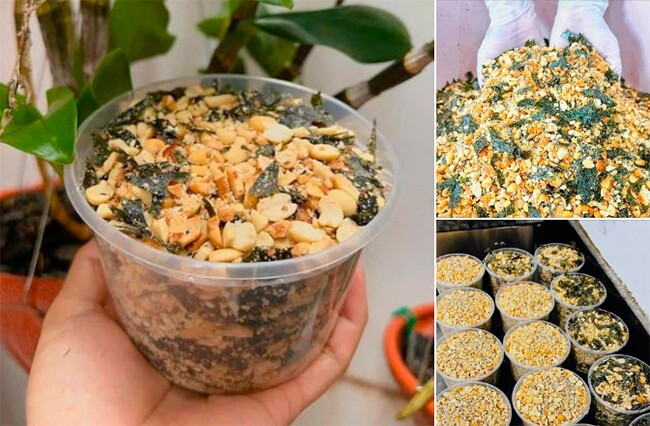In the past, when meat and fish were scarce, almost every household had a jar of sesame salt mixed with white rice to eat day in and day out. It was eaten so often that people grew tired of it, but at the time, there weren’t many other options.

Sesame salt, a humble rural dish, has now become a famous specialty.
“Since every household grew peanuts and sesame, these ingredients were readily available. I remember my mother preparing rice balls with sesame salt whenever I had to work in the fields early in the morning or through lunchtime,” recalled Ms. Bich from Ha Tinh province.
“Before going to school in the morning, my mother would give me a rice ball with sesame salt, which kept me full for a long time.”
What used to be a dish for the poor has now transformed into a famous specialty in the city. Besides traditional sesame salt, many people have “upgraded” it into a more luxurious delicacy, with prices reaching up to a few hundred thousand VND per kg for sesame salt with seaweed or various nuts like walnuts, cashews, and macadamia.

These upgraded sesame salts are packaged beautifully and sold at premium prices to city dwellers.
According to a survey, many online marketplaces and e-commerce platforms offer sesame salt at various price points. Traditional sesame salt costs around VND 140,000/kg, while sesame salt with seaweed is priced at VND 250,000/kg. Sesame salt mixed with various nuts can go up to VND 300,000/kg.
If additional ingredients such as Indian black sesame, Himalayan pink salt, seaweed, or vegetarian/vegan options are included, the price of this nutritious sesame salt can reach as high as VND 500,000/kg.
Ms. Thanh, a resident of Co Nhue in Hanoi, initially sold traditional sesame salt to her colleagues and neighbors in the apartment building. However, many customers started placing orders with special requests, such as adding seaweed or various nuts. This prompted her to expand her offerings to cater to these diverse tastes.

In addition to the traditional variety, there are now more premium options for sesame salt.
“I sell black sesame salt for VND 200,000/kg and seaweed sesame salt for VND 250,000/kg. When the cost of ingredients increases, I may have to adjust the prices slightly,” Ms. Thanh shared. “I usually package these in small boxes of 250gr or 500gr. Customers who order by the kilogram often intend to gift them or send them to their children living far away.”
“This side business isn’t too complicated or strenuous. The most important part is proper packaging to ensure the salt stays tasty and doesn’t melt. I’m meticulous about choosing reliable ingredient suppliers, and my mother often sends me ingredients from our hometown, ensuring the best quality. Thanks to a stable customer base, I now have additional income from this venture.”
Sesame salt is currently a popular item on online marketplaces, with many women buying it to keep in their offices. They pair it with brown rice for a healthy and convenient lunch option.































